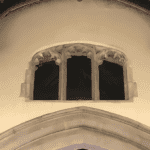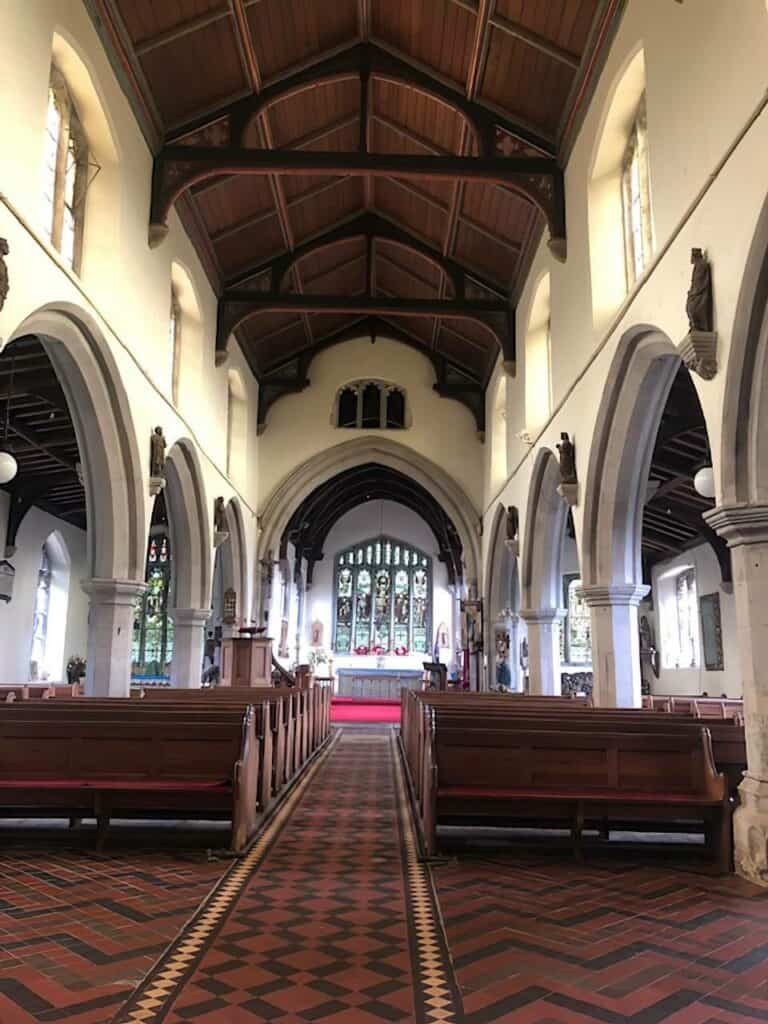About & History
About The Parochial Church Council (PCC) of Wisbech St Mary of WSM
Wisbech St Mary and Guyhirn church cover the villages and hamlets of Wisbech St Mary, Guyhirn, Rings End, Thorney Toll, Tholomas Drove and Bunkers Hill. It is part of a joint benefice under the ministerial care of Rev Sandra Gardner, which also includes Murrow, Parson Drove, Gorefield, Leverington, Newton in the Isle, and Tydd.
The church is looked after and managed by its churchwardens and Parochial Church Council, who are always keen to receive feedback on church activities and encourage more people to engage in its life as a central part of the community.
History
It has been about a thousand years since people began to worship here. It is unknown why they chose this wet soggy fenland site where the expectation of life was governed by the ague and outbreaks of deadly plagues. However, there is evidence that a stone building was erected here in the 11th century. Some of the nave arches have been built on stonework attributed to the Roman and Norman periods.
The population of this settlement could not have been very significant. Perhaps that is why the monks of the Abbey at Ely chose to settle and work here some two hundred years later. One of their first tasks would have been establishing a place to worship God. Again, we do not know whether they found the earlier building intact or just the foundations. Whatever the situation, they soon began to build this church dedicated to St Mary the mother of Jesus. The first phase was the nave, a simple, plain rectangular building. The fen folk living in isolated farmsteads needed to know where the church was, so a tower was erected to guide them as they trudged along the muddy fenland tracks. The building of the tower must have been an enormous task. There was not, of course, scaffolding as we know it today, but some clues remain visible from the outside, which helps us to understand how the tower was built.
 Six hundred years ago, the nave was given greater height and more light when the clerestory was added, and the delicate little window above the present chancel arch was inserted. A chancel, smaller than the present chancel, was built. The north and south aisles were added. Over the centuries, the church was subjected to additions and alterations until the middle of the nineteenth century.
Six hundred years ago, the nave was given greater height and more light when the clerestory was added, and the delicate little window above the present chancel arch was inserted. A chancel, smaller than the present chancel, was built. The north and south aisles were added. Over the centuries, the church was subjected to additions and alterations until the middle of the nineteenth century.
In 1883 it seems that the building was in a parlous state. Richard Devereux Jones, the vicar, who had arrived a year or two earlier, was struggling to keep the building intact. The Churchwardens and Overseers called a special meeting of the Vestry to ask the parishioners to subscribe to an appeal to save the church. The Vestry agreed to act, and an eminent London architect, William Bassett-Smith, was instructed. Still, it took seven years to complete the formalities, raise the money, and complete the restoration. In 1901 money was still needed to pay the remaining bills.
After the 1901 restoration, the church structure was very much as we see it today, except that the organ was in the south aisle, and there were four pews in the corner now occupied by the Lady Chapel. The font enjoyed a central position in front of the tower arch. The chancel had been largely rebuilt, and the vestry was to the north of the chancel. New seating was installed, and the floors were tiled. However, the vicar and his congregation were left with a plain building with bare walls and very little colour. The windows were either plain or yellow glass (as seen in the clerestory today). Devereux Jones was grateful but was ailing. He struggled until, almost completely blind, he handed over to a curate in 1910.
The most recent chapter in the church’s history began when Mowbray Smith arrived in 1914. In less than a year, he was away from the parish serving as chaplain to the forces in the Great War. On his return, he collected artefacts as he travelled in this country and on the continent. Most of the furnishings on and around the altars, the much-travelled lectern, the works of art, the wooden statues and the medieval stained glass are all memorials to Smith’s avowed intention “to turn this building into the most beautiful and dignified house in the parish”. He was instrumental in replacing the plain glass in the magnificent east window with a stained glass memorial to those who died in the two World Wars. He also arranged for the memorial windows to Richard Devereux Jones in the north aisle, the Grimwade family window in the south aisle and the Kilham family window in the baptistry. Thus the work of modern artists sits happily with that of medieval craftsmen.
And so we come to the twenty-first century. Fortunately, we are not faced with the severe problems that worried Richard Deveraux Jones. We have to acknowledge that the church is in reasonably good condition. Since 1901 we have been fortunate to have a succession of caring priests and congregations, and visitors admire the church. More recently, works have included the complete refurbishment of the south aisle roof, the installation of a state-of-the-art security system, the removal of three rows of Victorian pews to give an enlarged function area for a variety of activities, both church and community based, and the renovation of the church clock face, before the Queen’s platinum jubilee in 2022.
A church has watched over this community for nearly 1000 years. For 700 years, this building has been a parish church, an outpost of Wisbech St Peter, and more recently, in its own right, always welcoming parishioners in times of pleasure and sadness. Countless generations have been drawn close to God in this place. Babies have been baptised here, couples have been married here, and men and women of all ages have been brought here to their final resting place. This is Wisbech St Mary and Guyhirn’s church, one of the most attractive in the Diocese of Ely and well worth a visit.
